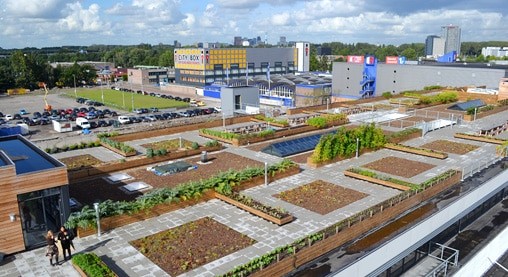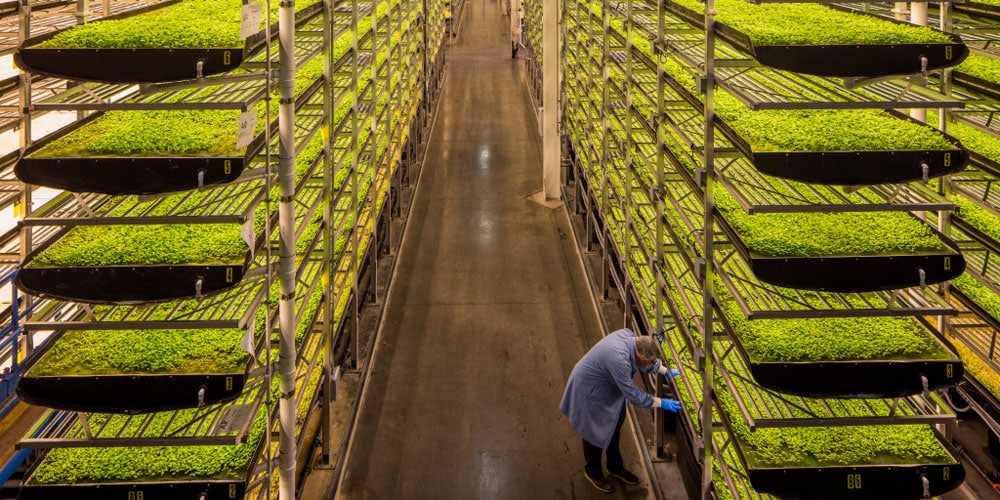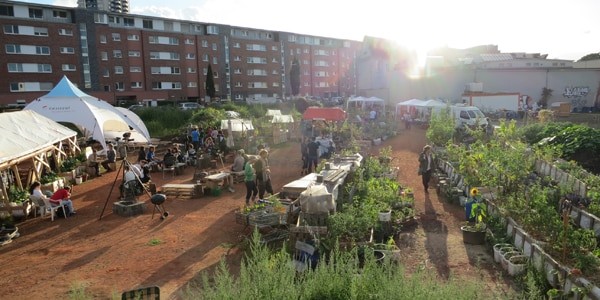Did you know that urban farming is more than a hip social movement for sustainable communities? Some urban farms are huge companies. That’s why I think urban farming is not a novelty, it is here to stay. The results of this movement are extremely positive: city dwellers eat more healthy food, cities are more liveable, and there is a positive impact on the environment. In this article, I want to present some inspiring examples of urban farming.
3 Great Urban Farming Cases
Zuidpark Amsterdam: Urban Farm Grows Creativity
Zuidpark is a shared office complex in Amsterdam. It boasts the largest urban farming roof in Europe: 32,000 square foot to grow, harvest and eat vegetables. The home-grown vegetables are used for the carrot cake and leek soup in the office restaurants.
The complex used to be the head office of V&D, the convenience store that went out of business in 2015. Especially hoping to attract start-ups as customers, the Zuidpark vision is that energy and creativity flourish in a sustainable environment.

AeroFarms: Possibly the World’s Largest Start-up
US start-up, AeroFarms, builds and operates environmentally responsible farms throughout the world. Their headquarters is a 69,000 square foot warehouse in Newark, New Jersey that functions as the world’s largest vertical farm: these structures use vertically stacked layers that make large-scale production possible in an urban environment.
Without the use of any pesticides, the AeroFarms site has the potential to harvest 2 million pounds of fresh, leafy greens a year. LED lights replace the sun, and sensors track the growing process. In this video you can see the magic at work!

Urbane Gärten München: 11 Reasons Why Urban Farming is Great
Around 50,000 people in Munich garden in the various community-organized urban gardens, mostly on public land. Almost all food is produced ecologically, even though Munich is the most densely populated city in Germany.
Being very socially engaged, the German project demonstrates some great effects of urban farming:
1. Biodiversity and species protection
2. Environmental awareness and plant knowledge
3. Production of cheaper, organic food
4. Air purification
5. Noise reduction
6. Reduction of traffic (food is consumed in the same city in which it is grown)
7. Better communication between citizens
8. Development of intercultural meeting points
9. Stimulation for participative and responsible urban design
10. More spaces for playing and experiencing the wonders of nature
11. Safe spaces for marginalized people

Want to Know More About Disruptive Trends?
Urban farming is an amazing, emerging trend. At RevelX, we salute developments that stimulate sustainability and creativity. Watch this space for the hottest news on disruptive trends.
René Jongen
Specialist in top line growth. Supports both corporates that are under a lot of commercial pressure and businesses that are looking for ways to accelerate their growth. Technical physicist. Builds on psychology and neuro-marketing insights.
Related posts
Strategies to counter disruption or to become a disrupter yourself
We see the same things happening in the business world.…
January 7, 2021
Early warning signals for disruption
Any industry can be disrupted. Netflix is a famous example.…
December 15, 2020
The Great Reset: Disrupt Or Be Disrupted
We live in times of unprecedented change. In order to cope…
December 3, 2020



